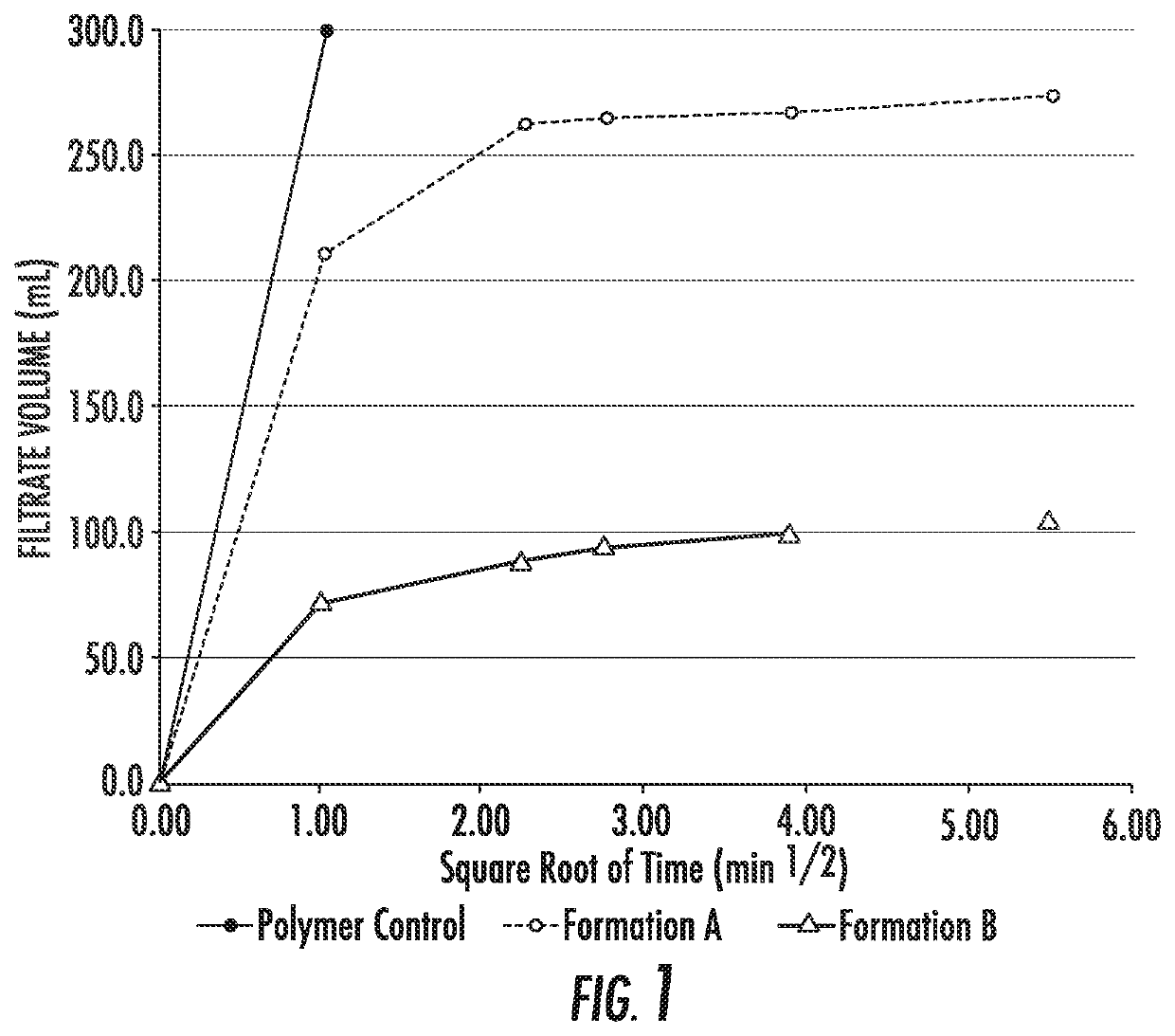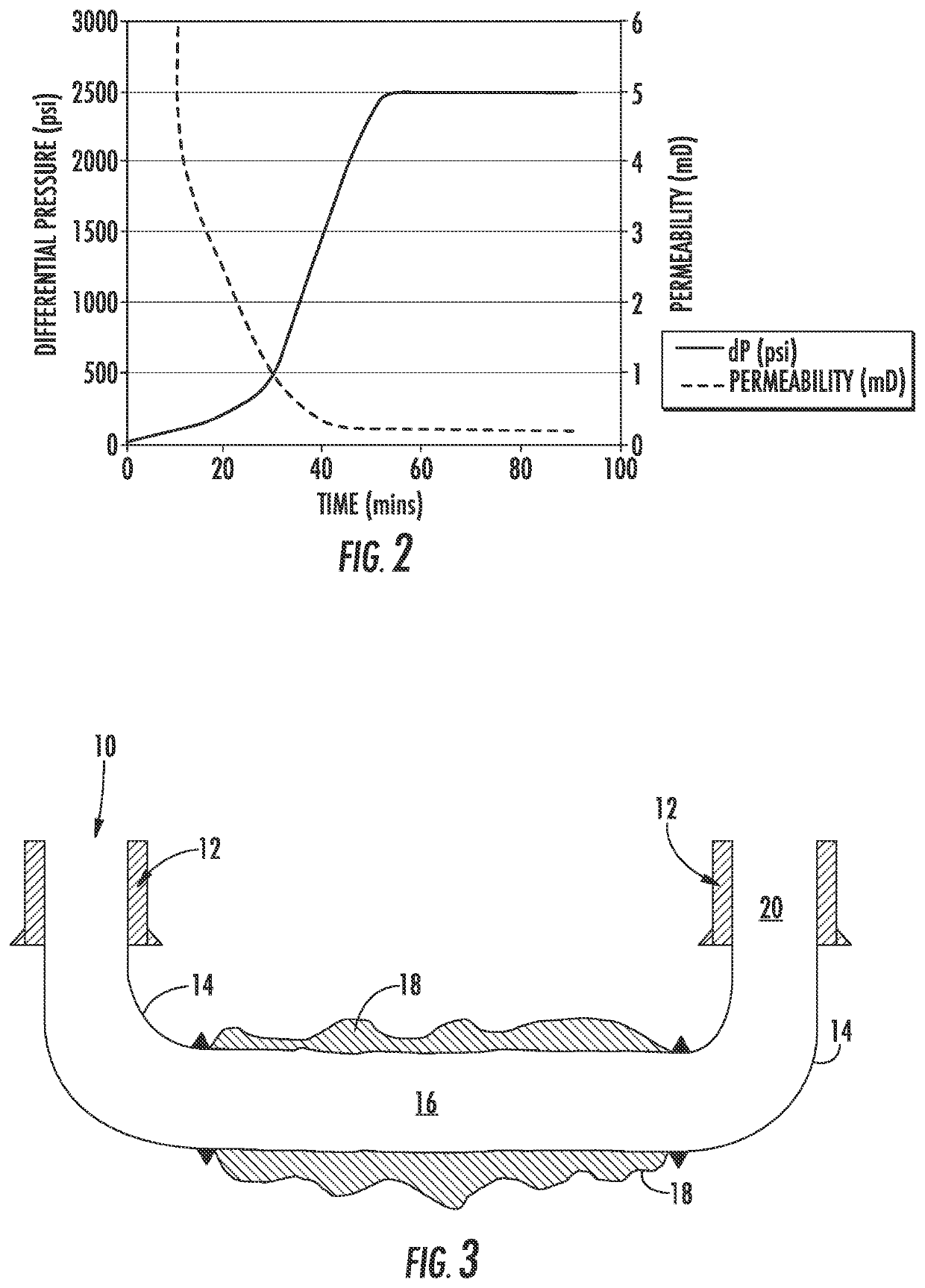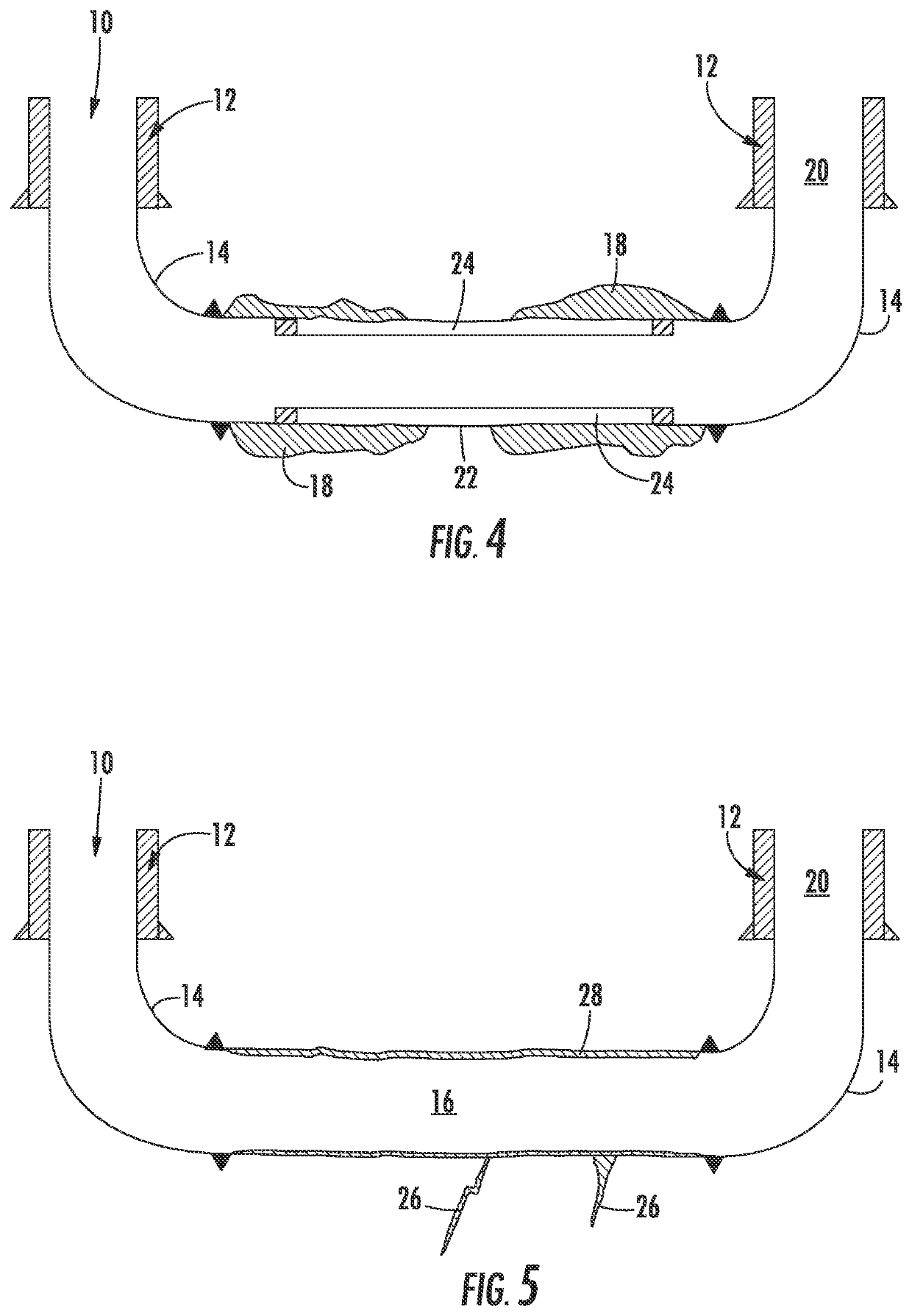Method for forming high efficiency geothermal wellbores using phase change materials
a technology of phase change materials and geothermal wellbore, which is applied in the direction of wellbore/well accessories, lighting and heating equipment, insulation, etc., can solve the problems of significant reduction, significant damage to formation, and significant impairment of permeability, so as to reduce thermal transfer, reduce thermal conductivity, and reduce the effect of thermal transfer
- Summary
- Abstract
- Description
- Claims
- Application Information
AI Technical Summary
Benefits of technology
Problems solved by technology
Method used
Image
Examples
example 1
Sealing
[0201]Initial testing of the sealing capabilities of the silicate system was performed in a permeability plugging apparatus.
[0202]Permeability Plugging Apparatus Tests:[0203]20 μm, 3000 mD discs (provided by OFITE) were soaked in a 30% calcium chloride solution overnight (approximately 16 hours) in order to fully saturate the pores with the brine and create a ‘severe case’ in situ fluid for the silicate drilling fluid with which to react.[0204]Permeability plugging tests (PPT) were run in accordance with OFITE Instruction manual and API RP 13i—Recommended Practice for Laboratory Testing of Drilling Fluids—[0205]250 mL of the test fluids described below was transferred to the PPT cell and a pre-soaked disc was placed in the apparatus. The drilling fluid was allowed to contact the disc for 45 minutes prior to pressurizing the apparatus and beginning the test.[0206]The tests were performed for 30 minutes at room temperature and 500 psi.[0207]Filtrate volume was recorded after 1,...
example 2
[0234]A working fluid was tested consisting of water, a commercially available corrosion inhibitor, potassium bromide, cetyltrimethylammonium surfactant, sodium salicylate, and calcium carbonate solid particulates at 0.5 weight %.
[0235]Measurement of pressure drop (i.e., drag) and characterization of the turbulent flow was tested using a 2″ 200 L capacity heated flow. The loop is equipped with a centrifugal (GIW, LCC-M 50-230) and a progressive cavity (Moyno™, 2F090) pump with high and low shear, respectively. The maximum Re number reaches 500,000 and the loop can operate with 15% volumetric concentration of solid. Pressure drop was calibrated with fresh water and compared to frictional pressure drop at the same flow rate using the working fluid. A turbulent drag reduction of 63% was achieved over a temperature range suitable for direct use heat applications.
[0236]To test reactivity with unspent alkali-silicate in the near-wellbore, Ecodrill™ 317, a 29.1% active solution of 2.5 rati...
example 3
l Method
[0239]In one embodiment, the mechanism may be effected by adding solid particles to the drilling fluid which migrate naturally into the pore space / fractures to reduce permeability. This is generally known as loss circulation material (LCM).
[0240]The solid particles may be granular materials, fibrous materials and flaked materials and combinations of these and be present (dispersed through drilling fluid) in sizes necessary to reduce permeability. Suitable sizes may be nanometer to millimeter in size.
[0241]Abrams' rule and / or Ideal Packing Theory concepts are useful to establish the most suitable materials. Abrams' rule proposes particle size of the bridging agent should be equal to or slightly greater than ⅓ the medium pore throat size of the targeted formation.
[0242]The ideal packing theory proposes a full range of particle size distribution to effectively seal all voids, including those created by bridging agents.
[0243]Particles may also be sized to penetrate into the pore...
PUM
 Login to View More
Login to View More Abstract
Description
Claims
Application Information
 Login to View More
Login to View More - R&D
- Intellectual Property
- Life Sciences
- Materials
- Tech Scout
- Unparalleled Data Quality
- Higher Quality Content
- 60% Fewer Hallucinations
Browse by: Latest US Patents, China's latest patents, Technical Efficacy Thesaurus, Application Domain, Technology Topic, Popular Technical Reports.
© 2025 PatSnap. All rights reserved.Legal|Privacy policy|Modern Slavery Act Transparency Statement|Sitemap|About US| Contact US: help@patsnap.com



